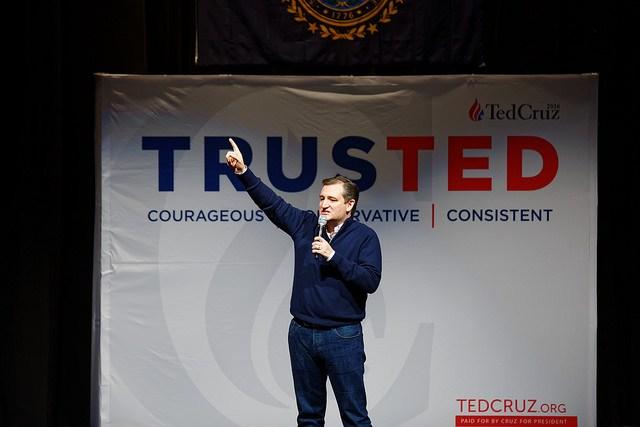The Skills Gap in India’s Ambitious Renewable Energy and Climate Goals


Last year, the United States helped lead nearly 200 nations to the bargaining table to come to an agreement on the changes needed to address climate change on a massive scale. It was an amazing show of solidarity for a global community that very rarely agrees on anything of consequence, much less a problem of this immediacy and magnitude.
Nevertheless, some of the less affluent nations involved are bracing themselves for the growing pains that will accompany this unprecedented – but non-binding – agreement. India in particular will need to make dramatic investments if it wants to make good on its promises.
India’s phantom workforce
India has set extremely ambitious targets for the rollout of renewable energies and climate-change benchmarks. The trouble is, it needs a great many more skilled workers to make these goals a reality.
The green-jobs boom in India has barely begun, and it will require a dramatic uptick in skilled technicians, engineers, maintenance workers, solar panel installers and data monitors. The estimates so far place the potential number of new hires at 1 million – a significant number, even in a country with a population of more than 1.2 billion. What we’re talking about here is nothing less than modernizing an entire country’s existing infrastructure. No small feat.
According to the the Natural Resources Defense Council, the breakdown of this new workforce is as follows:
- 624,000 construction and commissioning positions (semiskilled)
- 182,000 construction and commissioning positions (skilled)
- 182,400 operations and maintenance (O&M) positions (semiskilled)
- 81,000 O&M positions (skilled)
- 28,600 design and preconstruction positions
- 17,600 business development positions
In a country as diverse as India, it certainly works in its favor that a healthy mixture of skilled and semiskilled workers will be necessary as this plan comes to fruition.
What are India’s goals?
If such a significant number of new skilled workers is necessary, what, exactly, is India hoping to accomplish?
India has set its national target to deploy 100 gigawatts of solar energy by 2022. In addition to the 1 million new workers, it will need to allocate the equivalent of US$100 billion in government funds to make this transformation happen.
It’s important to note that the rollout of solar power and other forms of renewable energy has been slowed somewhat by the dramatic fall in oil prices across the globe. After Iran entered the global oil market, the price of crude oil in India fell from $106 per barrel in July 2014 to just $26 in January 2016 – a full 75 percent drop in just 15 months. Since heating oil is derived from crude oil, the cost of living has fallen for people of all socioeconomic backgrounds, all across the world. If we were looking for an incentive to ramp up our clean-energy efforts, the last thing we needed was an unprecedented drop in the cost of oil.
Nevertheless, India appears fully committed to meeting its lofty goals. The Make in India initiative, which got off the ground in 2014, exists to attract investments in India’s domestic manufacturing industry, enhance its existing manufacturing infrastructure, and bring about a general rise in skill capacity in the Indian labor force. The ultimate goal is turning India into a sought-after destination for foreign investment, encompassing 25 industries across the country.
How can India get it done?
The Ministry of Skill Development and Entrepreneurship in India is rolling out qualification standards for the country’s workforce. In addition, the Skill Council for Green Jobs has positioned itself to directly support the burgeoning green-jobs labor force. Finally, the Ministry of New and Renewable Energy has taken direct steps to introduce curricula related to clean and renewable energy into India’s industrial training institutes. All told, each of these initiatives will raise the importance of green industries in the nation’s consciousness, and turn these goals into a shared national priority.
In many ways, India’s commitment to the climate agreement puts even the United States’ response to shame. It’s no secret that the Republican-led U.S. Congress has been openly scornful of President Barack Obama’s leadership on this front, and appears committed to doubling-down on U.S. oil industry subsidies – valued at more than $5.3 trillion per year – rather than investing in a clean-energy future.
Although it’s tempting to believe that, through American exceptionalism, the U.S. can lead the world by positive example, India appears to be emerging as one of the leading voices in the clean-energy revolution. The rest of the world will be watching to see how well it lives up to its lofty ambitions – and who knows? Maybe even the United States can learn a thing or two from our Eastern neighbors along the way.
Image credit: Hard Life with a big smile... via photopin (license)
Doctors: Microcephaly in Brazil Caused by Larvicide, Not Zika?


Ed. note: News is emerging that the two organizations involved with the larvicide accusations have a history of pesticide activism and Brazil's Ministry of Health says there is no scientific basis linking the chemical to the birth defect in babies. We'll continue to monitor the story and update as available.
As the World Health Organization (WHO) ramps up its fight against the Zika virus in an effort to stop the rise in microcephaly cases emerging in Brazil, a group of Argentinian and Brazilian doctors have posed a controversial question: What if the epidemic of microcephaly in South America's largest nation isn't being caused by mosquitoes, but the country's water source?
Two organizations, Physicians for Crop-Sprayed Towns (PCST) and the Association for Collective Health (ACH), are questioning the government's claim that mosquito infestations are causing thousands of babies in Brazil to be born deformed. Instead, say the organizations, the microcephaly epidemic (which is up to more than 4,000 suspected cases) is due to the government's use of a controversial larvicide, pyriproxyfen, in community drinking water sources in 2014.
The government approved the use of the larvicide in an effort to control mosquitoes in Brazil's dense population centers prior to the World Cup competition.
"A dramatic increase of congenital malformations, especially microcephaly in newborns, was detected and quickly linked to the Zika virus by the Brazilian Ministry of Health," Physicians for Crop-Sprayed Towns said in a statement on its website. The organization accused the government of overlooking several key factors that may point to the fact that the malformations aren't the result of mosquito bites, but an endocrine disruptor in the larvicide.
"[In] the area where most sick persons live, a chemical larvicide ... has been applied for 18 months," stated PCST, which notes that the larvicide reduces the number of mosquitoes by prohibiting the birth of viable larvae.
Second, the organization noted, Brazil is to-date the only country in which large numbers of microcephaly have been recorded. Many of those cases have not, as of yet, been firmly linked to Zika virus or to its "sister" virus, dengue, which is also on the rise.
"[In] other countries such as Colombia there are no records of microcephaly; [even though] there are plenty of Zika cases," the organization said. There also isn't any evidence of widespread microcephaly cases linked to previous Zika epidemics, such as the one that Brazil experienced in 2013.
The Brazil-based Association for Collective Health (ACH) is equally critical of the government's position. It maintains that pyriproxyfen's function as an endocrine disruptor and teratogenic agent (preventing the maturation of life cycle development) is the likely cause of the spike in microcephaly cases.
Poor sanitation methods in those areas hardest hit might suggest that the Zika outbreak was the cause. But ACH noted that these are also the areas in which larvicide use was concentrated in 2014.
ACH has also posed some challenging questions for the government to consider:
"[When] did the dengue cases become more serious? Between 1770 and 1950, when the similar Zika virus was discovered, dengue was 'a benign disease' that didn't cause developmental changes like microcephaly."
At least one state in Brazil is heeding the physicians' warnings. Late last week, Rio Grande do Sul banned the use of pyriproxyfen. Brazil's health minister, Marcelo Castro, criticized the decision.
“For us, there's no doubt at all that the microcephaly epidemic is a consequence of the epidemic of Zika virus, which did not exist in the Americas before," Castro told the Brazilian publication, O Globo Journal.
WHO, meanwhile, has announced an aggressive fight against the Zika virus and the aedes aegypti mosquito, which it plans to combat with increased use of genetically-modified larvicide. On Monday, the WHO announced a $51 million plan to stop the spread of the mosquito, which it sees as a "staggering" threat to combating epidemics like Zika and dengue.
The aedes aegypti, a very adept and adaptable insect, has migrated in recent years from "water collected in tree holes and the axils of plant leaves in forests," to "discarded plastic cups and bottle caps, plates under potted plants," pet bowls and other areas found in and around human population, the WHO said in a press statement. The mosquito has also adapted its feeding techniques to "sneak attacks" that help its ability to feed and can infect multiple hosts at a time.
Still, it may not be known for a few months whether the increase in microcephaly cases is really due to Zika or to the mosquito-control methods that Brazil has used in its population centers. Colombia, which has not used pyriproxyfen in its water sources, also reported an upsurge in Zika cases in recent weeks but hasn't, as of yet, reported a spike in microcephaly. Neither outcome bodes well for Brazil's population, however, which still faces a long fight against the tiny mosquito.
The Wealthiest Americans Are Throwing Big Money at Presidential Candidates


The wealthiest in the U.S. are trying to buy the presidential elections. Politico’s analysis of the top 100 presidential campaign donors reveals that they’ve spent $195 million this year.
Jeb Bush and Hillary Clinton are the biggest recipients of cash from these top 100 donors. Super PACs (political action committees) gave Hillary’s campaign $38 million raised from the top 100, donors and Jeb has received $49 million from these donors.
Some of the top 100 donors are likely looking for another Republican candidate to put their money on considering Jeb’s lackluster performance in Iowa and New Hampshire where he garnered 2.8 percent and 11 percent of the votes, respectively. Ted Cruz might be their man as he received $37 million from the top 100 donors.
Cruz has the support of four of the top six donors on the list (the Wilks family of Cisco, Texas, New York hedge fund tycoon Bob Mercer, Texas energy investor Toby Neugebauer, and Illinois manufacturing moguls Dick and Liz Uihlein).
Or it could be Marco Rubio. He raised $22 million from top donors and “appears to have the support of 14 of them, suggesting his ultra-rich supporters might be willing to spend even more to support him,” Politico reports.
Why is there so much money flowing from the wealthiest in the U.S. this election cycle? Here are two words for you: Citizens United. As Politico put it, its analysis “illustrates the unprecedented influence of the ultra-rich in the second presidential cycle after the Supreme Court’s 2010 Citizens United decision, which cleared the way for unlimited campaign spending and led to the creation of super PACs.”
Let’s look a bit closer at Citizens United, the January 2010 Supreme Court case which ruled that “political spending is a form of protected speech under the first amendment,” and the government can’t “keep corporations or unions from spending money to support or denounce individual candidates in elections.”
The Center for Public Integrity sums up Citizens United by stating that it “tossed out the corporate and union ban on making independent expenditures and financing electioneering communications” and “gave corporations and unions the green light to spend unlimited sums on ads and other political tools, calling for the election or defeat of individual candidates.”
The 2012 presidential election, the first one since the Supreme Court ruling, boasted “more than twice the political spending as any previous election,” Reclaim Democracy says of the effects of Citizens United. The nonprofit attributed the increase in political spending to Citizens United, declaring that “independent political spending of the kind Citizens United allows accounted for all of that increase.”
There is a presidential candidate who rails against Citizens United and does not have a super PAC. His name is Sen. Bernie Sanders (D-Vt.), and although he sits in the Senate as an independent, he is running for the Democratic nomination. At last week’s Democratic debate, Sanders proclaimed: “We have today a campaign finance system which is corrupt, which is undermining American democracy, which allows Wall Street and billionaires to pour huge sums of money into the political process.”
Politico contrasts the campaign contributions of Clinton and Sanders. In 2015, super PACs supporting Clinton raised $55 million and $38 million of that was from the top 100 donors, which included $8 million from the fifth largest donor, financier George Soros. Sen. Sanders has “relatively little support” from super PACs, Politico reports.
On Sanders website he has a blog post titled, Getting Big Money Out of Politics and Restoring Democracy, and in it he describes the political campaign-finance system as “corrupt and increasingly controlled by billionaires and special interests.” In the blog post, Sanders mentions Citizens United, characterizing it as “disastrous” and calls for overturning it “through a constitutional amendment.” He also states that “we need to move toward the public funding of elections.”
Whether Sanders can actually get the Democratic presidential nomination remains to be seen. But his campaign is the only one highlighting a big problem in American elections, and he backs up his words by not having a super PAC. What effects his words and actions have on elections in the long term also remains to be seen. For the sake of democracy, we can only hope he has an impact.
Photo: Flickr/Michael Vadon
Mid-Century Eichler Homes Score a Sustainable Makeover


Mid-century modern architects such as Oscar Niemeyer, Eero Saarinen and Richard Neutra often come to mind during discussions of how this school of design -- featuring open spaces, clean lines and floor-to-ceiling windows -- revolutionized design and urban development from the 1930s to the 1960s. But many of these architects only focused on high-profile projects, such as Neimeyer’s United Nations Headquarters in New York and the many futuristic buildings he designed in Brasilia. Saarinen is known for the GM Tech Center in Detroit and main terminal at Dulles International Airport outside of Washington, D.C. Joseph Eichler, however, strove to bring this aesthetic to the masses.
And to a large extent, Eichler did, as his company built over 11,000 homes, most of which are in Northern California. Towns such as San Mateo, Sunnyvale and Cupertino in the Bay Area and Orange and Grenada Hills in Southern California became centers of a movement often called “California Modern.”
The homes were certainly unconventional for the time: For example, rooms were arranged around a central atrium in Eichler’s attempt to integrate indoor and outdoor spaces. Eichler eschewed front-facing windows in the interest of privacy, but the homes benefited from floor-to-ceiling windows that allowed natural light to filter in and change the color of the interior depending on the time of day.
Unlike the typical California tract home, an Eichler Home (or “Eichlers”) had an open plan and was airy, showcased many exposed posts and beams, boasted roomy closets with sliding doors, and even included a second bathroom in the master bedroom.
Eichler also held unconventional views for his era: All of the developments he built had a non-discrimination policy, and he would even offer to buy back homes from buyers who had difficulty accepting the fact that they had minorities as neighbors. He also resigned from the National Association of Homebuilders in 1958 over the organization’s refusal to end racial discrimination policies.
Eichler homes fell out of favor in the 1970s and 1980s as Americans demanded larger homes and mid-century design fell out of fashion. Growing up in Cupertino in the '80s, I remember Eichlers being often derided as dumps. Hundreds have been lost as they were torn down and replaced with McMansions, or were renovated — often with a second story — to a point at which they were no longer recognizable.
But mid-century modern is in vogue again. Those same homes derided in Silicon Valley are now amongst the most well-kept in town, with their distinctive front doors painted in bright colors with impeccable landscaping surrounding them. Towns with large numbers of Eichlers, including Cupertino and Palo Alto, require an architectural review before any renovations can be made. Now highly coveted, Eichlers have plenty of devotees across California.
Much of the renewed interest in Eichler and other mid-century modern architects is because of the work of Modernism Week. For 10 years, this annual celebration in Palm Springs has attracted scholars, architects and fans of this school of design together for lectures, panels, and tours of various homes and buildings the Coachella Valley. This year’s Modernism conference had one day focused on Eichler, and last Saturday, attendees had the opportunity to tour new Eichlers built using original plans.
One leader in the preservation of Eichlers is Monique Lombardelli, a Bay Area real estate broker who specializes in Eichlers and produced the film, "People in Glass Houses: The Legacy of Joseph Eichler." As explained to an audience of Eichler fans last weekend, Eichlers have hit the mainstream, and not only is it wise to preserve the ones already existing, but also to build new ones. “It’s our job to respect them,” she said, “and to hold them dear, cherish them and build new ones in order to honor Joseph Eichler.”
Whether Eichler homes will ever be built at the scale they were over a half-century ago remains to be seen. A few have been built in Palm Springs with more on the way. While staying true to Eichler’s original concept, they have been designed to meet the demands of 21st-century owners. The original Eichlers were highly energy inefficient, largely because of the construction materials used. Windows were single-pane, the design of the roof only allowed for a half-inch of insulation at best, and the radiant heating units in most of these houses were installed at a time when utility bills were an afterthought.
Addressing the challenge that up to 80 percent of lost energy in these houses escapes through the roof, these homes are insulated with either rigid foam or spray foam insulation. Low-e glass allows light to filter in while minimizing the amount of solar heat entering the home. Instead of the clunky radiant heating system common in original Eichlers, the new ones have a mini-split HVAC system in order to keep utility costs more manageable during the searing Coachella Valley summer heat.
Depending on the interest garnered by this next generation of Eichler homes, local developers say they have land on which they can build small tracts of these homes. The insane California real estate market most likely means they will not be available to the masses as the originals built over 50 years ago were. Nevertheless, the current houses certainly pay homage to Eichler’s vision of progress, clean design and his insistence that his homes should be welcome to everyone.
Image credits: Leon Kaye
Trader Joe’s is Going Cage-Free With Its Eggs


Trader Joe’s announced last week that it will transition its entire egg supply to cage-free sources. First up are Western states: Eggs sold in California, Oregon, Washington, Arizona, New Mexico and Colorado will be 100 percent cage-free by 2020. All eggs across Trader Joe's stores will be sourced from cage-free suppliers by 2025. But the company might meet its goals sooner.
“If market conditions allow us to accomplish these goals earlier, while still providing our customers outstanding value, we will do so,” Trader Joe’s said in a statement.
The Humane Society of the U.S. highlights the importance of Trader Joe’s announcement, mentioning in a blog post that the grocery store chain is “one of the nation’s largest grocers with nearly 500 locations.” The HSUS has long been calling for Trader Joe’s to go cage-free, beginning in 2005 when Whole Foods Market made an announcement that it would source 100 percent cage-free eggs.
The result was a “compromise where the company committed to switch all its private label eggs to cage-free,” HSUS said. And that compromise resulted in Trader Joe’s egg sales being 62 percent cage-free, which is “very far above the national average,” the group noted.
Compassion in World Farming launched a campaign a few weeks ago aimed at Trader Joe’s with a parody of Adele’s song “Hello” and a petition. The campaign likely played a big part in Trader Joe’s decision as it showed the company that its customers want cage-free eggs. “When it comes to the work we do to offer products we think fit our customers’ needs—covering a range of considerations, we continually evaluate our offerings and adjust them as warranted by sales and direct customer feedback,” the company stated.
“Trader Joe’s successfully positioned themselves years ago as a ‘natural foods’ grocer, and this recent cage-free egg announcement proves they will listen to customers’ demands to adhere to their values,” Rachel Dreskin, food business manager for Compassion in World Farming, told Triple Pundit. “Grocers provide their customers with options, but it has now been made clear for all food retailers: Consumers do not want the option of cruelty on the shelves.”Many companies have made similar announcements to Trader Joe’s recently, including Jack in the Box, General Mills, Wendy’s and Subway. Cage-free eggs are clearly the future for companies that buy eggs. And that is good news for the American hens who no longer have to spend their lives cooped up in small cages. The majority of egg-laying hens in the U.S. are confined in battery cages with only 67 square inches of space, which is far too little for them to even spread their wings.
Dr. Jayson Lusk, professor and Willard Sparks Endowed Chair of the Department of Agricultural Economics at Oklahoma State University studies how consumers view cage-free eggs and other cruelty-free products. "Consumers don't know much about hen housing conditions and their presumptions are incorrect and overly optimistic," Lusk told World Animal Protection.
According to Lusk, consumers think that only 40 to 70 percent of egg-laying hens live in cages, although it’s closer to 95 percent. And only 10 percent of North American consumers know about how hens are housed. If an additional 15 percent did know, cage-free egg sales would increase by over 20 percent, Lusk said. That would equal 1 million hens free of battery cages. But if 75 percent of consumers were aware, that would be another 8 million hens freed of those cruel cages.
Another interesting tidbit from Lusk’s research is that about half of all consumers who buy eggs reported that they would buy a different brand if they found out their grocery store sells products from animals that had to unnecessarily suffer. So clearly, Americans just aren’t down with animal cruelty, but many aren’t aware of cruel practices like the use of battery cages. With more consumer awareness, perhaps within the next decade we can have an egg supply chain in the U.S. that is completely cage-free.
Photo: Flickr/betancourt
The State of Green Behind the Scenes of Film and TV


I come to write this article, my first for TriplePundit, as someone who has worked in film, television production and entertainment marketing since the late '80s. Back in the day, not much thought was given to throwing away old sets and materials after a shoot or production. Somehow, back then, as in many other industries, no one really considered what happens to all of this garbage, much of it coated with toxic chemicals, after we were done with those fake boulders we made for a commercial or that fake streetcar made of wood, foam, metal and Bondo that was made to crash for 20 seconds on film.
Yes, of course someone of my age remembers the Keep America Beautiful “People Start Pollution, People Can Stop It” commercial in the early '70s, but we were yet to connect what we were doing and how it contributed to the ultimate downfall of the health of the planet. If you worked for a small scene shop, as I did in the early days, you got used to reusing as much as you could, just to save on costs. Wood and dumpsters both cost money. Still, much was thrown away.
Then, when bottled water started to become a more regular thing, it was ubiquitous on shoots, and this, of course, was before single-stream recycling was widely available. The “battle of the bottle” would become one of the main points in getting crews to change their habits and use reusable bottles instead of disposables. Back in the early '90s, some media industry visionaries got together to form the Environmental Media Association, which advocates for sustainability within storylines, rallies celebrity endorsement for environmental endeavors, and holds an annual star-studded awards ceremony.
Much of what you read in the sustainability press deals with large industries like agriculture, manufacturing, travel/transport and energy, and yet the worldwide entertainment industry is set to top $2 trillion in 2016. The entertainment industry and celebrity association is also a major influencer in consumer behavior and purchasing habits, and it’s mentioned as part of a UNEP report on how to push sustainability with the general public of consumers.
So, what has this behemoth of an influential industry done to make itself more sustainable inside and out? Here in the U.S., most of the major film studios have sustainability departments that coordinate with sustainability managers on some, most or all of their productions. These managers work with all departments to cut down on landfill waste and carbon emissions.
The Producers’ Guild of America has a quite extensive online guide and services directory as part of its PGA Green Guide Initiative. It published a landmark report in 2014 that illustrates to producers and filmmakers that sustainability plans, implemented from pre-production onward, can help save a production money. That report was penned by Emellie O’Brien, a New York-based sustainability advisor. Through her company, Earth Angel, she has advised on numerous blockbusters like Sony Pictures’ “The Amazing Spiderman 2" and the upcoming "The Queen of Katwe," which partially filmed in Uganda.
Online and brick-and-mortar resources like ArtCube (New York-based but international), Strike it Green (New Orleans), Ready Set Recycle (Toronto, Canada), Scenery Salvage and Dresd (the U.K.), help production people recycle sets, props and costumes. Other organizations provide low-wattage lights, solar generators, compost and food donation and collection, among many other useful services. The list of sustainable production service providers is growing, just as sustainability-based businesses are growing outside the entertainment industry.
The U.K. has its own guide, like the PGA Green Guide in the U.S., which includes a carbon calculator and a services directory, here on We Are Albert. The U.K. also passed an official government standard for sustainable media production with its BS 8909 Standard for Sustainable Production.
Also, in Europe, the Netherlands Film Fund appointed a head of sustainability, which was a result of efforts by the Green Film Making Project to make production more sustainable there. Germany-based Green Film Shooting is doing a fine job of covering the international scene of sustainable production. In France, Eco Prod works with productions and provides a resource for sustainability within the industry. The group helped organize an international panel just prior to COP21 back in December and published this informative brochure. It was also part of the effort to pass a charter at COP21, championed by the World Bank’s Connect 4 Climate and Film 4 Climate Initiatives.
A charter will not succeed without universal and international cooperation, however. In the course of us doing business, we have also become aware of efforts to “green the business” in Italy and in India, one of the world’s largest media producers. This is all good news, but, like any large industry, true industry-wide change won’t come until there is buy-in from the top producers and UPMs (Unit Production Managers -- the on-the-ground managers of budget and resource allocation on a production), to department heads, to the crew members to even day player “background” aka extras.
As a business, the entertainment media industry is all glamour on the surface. But underneath, it is produced by groups of people -- skilled people who work 12+ hours a day, utilizing large amounts of resources: from the many vehicles in a production’s fleet, to the food and drink provided to cast and crew, to the clothing and costuming, sets, props, cleaning products, paper products, product placement, hotels, locations rented, studios and warehouses used for filming, to the power provided along with the stories being told and how they’re being told. Making over this industry as a model for sustainability in the 21st century can seem a Herculean task.
Public awareness can help. Just as public demand for better food production, better apparel production, more energy-efficient vehicles and appliances, and safer cleaning products and cosmetics has bolstered efforts in those industries, so can public demand for a more sustainable entertainment industry, push forward efforts for improvement, and vice versa.
Not only was “Star Wars: The Force Awakens" the film to see this winter, but it was also made with sustainability practices firmly in place. It may well unseat “The Amazing Spiderman 2” as the largest sustainably-made blockbuster to date, and this, of course, is a fabulous development. For the agreements set forth at COP21 to succeed, the sustainable business community must evolve into just “the business community." The “sustainable entertainment community” must do the very same thing.
Image credit: Flickr/Mark Sebastian
Beth Bell is the founder and president of Green Product Placement, the first Entertainment Resources Media Association product placement agency that specializes in placing and promoting green, sustainable, socially enterprising and entrepreneurial brands in mainstream entertainment media. Since their launch in early 2012, they have placed over 70 good brands in over 170 productions in the US, Canada and the UK. Ms. Bell has a degree from University of North Carolina School of the Arts, and has worked professionally in television and film production since the late 80’s, and has worked and consulted in entertainment, media and event management and marketing for over 15 years. She has spoken internationally on the subjects of: product placement, green marketing and entrepreneurship.
Twitter: @GreenPrdctPlace
Orange launches website for entrepreneurs in Africa and the Middle East


Orange has launched the Entrepreneur Club, a website that provides practical guidance and tools for company creation to startups in Africa and the Middle East. At the Club, entrepreneurs can find information on the legal environment, how-to sheets, best practices, tips and video testimonials in which experienced entrepreneurs from Africa and the Middle East talk about the problems they have encountered and what they do to overcome them. Specialized journalists and lawyers contribute technical articles and practical advice in easy-to-understand language. In addition to Orange’s local B2B services, the site introduces Orange’s business support services, Imagine with Orange, Orange Partner, Orange Developer, Orange Fab and Orange Digital Ventures. Orange also supports small and medium companies in the region as part of its corporate social responsibility policy, for example, through the Orange Prize for the social entrepreneur in Africa and by working with a number of local incubators (CTIC in Senegal, CIPMEN in Niger, etc.).
Counting the cost of capital for renewable energy investments in the EU


The “DiaCore project” has evaluated the cost of capital across the European Union, and has found that it varies significantly from country to country. The project’s report is the first to estimate the costs of capital for onshore wind energy across all 28 EU Member States. The cost of capital is determined by the cost of debt, and the cost of equity. In 2014, this cost ranged from between six percent in German to more than 15 percent in Estonia, Greece, Latvia, Lithuania, Romania, and Slovenia. The cost of debt varied between 1.8 percent in Germany and 12.6 percent in Greece. This resulted in a weighted average cost of capital from 3.5 to 12 percent.
“There is a growing gap among EU Member States on the financing of renewable energy project,” explains Ecofys Principal Consultant David de Jager. “From the very start of a project, project developers in the EU do not face the same financing conditions. Why does the cost of capital vary so much? Because of the risks for investors: if an investment is risky, the cost of capital increases”.
The project finds that next to the generic country risk, the main risk for investors in renewable energy is the policy-induced risk. Unstable policies, such as sudden retroactive changes, automatically increase the cost of reaching renewable energy targets.
The DiaCore project was funded by the Executive Agency for Small and Medium Enterprises (EASME). The research was led by Ecofys, Fraunhofer ISI, eclareon, EPU-NTUA, TU Wien and LEI and was based on interviews with more than 110 banks and project developers in the EU.
The report can be downloaded at the DiaCore webpage.
The Rising Cost of the Zika Virus Epidemic


Brazil is calling out its latest defense against the Zika virus: the military. Armed with leaflets, some 200,000 troops fanned out across cities, towns and remote rural villages this week. Their mission: Zika Zero -- the task of educating citizens on how to protect themselves against the disease.
The door-to-door process alone is massive. With more than 200 million residents in the country, the airforce, army and navy will visit some 3 million households, urging residents to be proactive against the Aedes aegypti mosquito (A. aegypti), which is blamed for the epidemic.
The Zika virus is suspected to cause microcephaly in newborns, a rare birth defect that causes babies to be born with abnormally small heads. The World Health Organization has yet to establish a definitive cause-and-effect connection, but the link is "strongly suspected." This caused some affected countries to urge couples to delay or take increased precautions when considering having children. The U.S. Centers for Disease Control and Prevention and other groups have also issued travel warnings for affected countries.
Underscoring the urgency of this campaign is the news that Zika and old foes like dengue and malaria (all of which can be carried by the A. aegypti mosquito) is being spread by climate change. The warmer, more sustained temperatures caused by global warming, combined with the present El Niño/Southern Ossillation conditions that brought increased rain to the Southern Hemisphere last year, offer perfect breeding conditions for the zebra-striped insect. It also means that the environmental range for the mosquito is widening, offering habitat in areas where the insect has rarely been seen.
Not surprisingly, the financial price-tag attached to controlling the Zika epidemic is expected to be steep. Global health organizations haven't yet been able to put a dollar figure on the battle, but until last year, only a handful of the 30 countries now struggling to address the virus had seen any substantial evidence of the disease on their shores.
So, to calculate a projected cost of the Zika virus (globally), researchers are looking at what it cost countries to combat the dengue epidemic, which swept through Asia, Africa and Latin America in or around 2013. The global tally was $8.9 billion, more than Mexico's military budget in 2013.
Matheus Takatu Barros and Donald S. Shepard, PhD, from the Heller School for Social Policy and Management at Brandeis University, found that developing nations constituted the majority of the hardest hit countries in the dengue epidemic. Brazil, with its sizable population and land mass, came in third in expenditures, at $728 million, topped by Indonesia ($2.2 trillion) and India ($1.5 trillion).
They came to these figures by looking at assessment and treatment costs, then adding them to the expenditures for preventative measures, and wrapping in the price that the epidemic had on things like loss of tourism and trade.
For countries that depend heavily on tourism, epidemics like dengue and Zika can have a sizable price-tag. In 2013, international tourism brought more than $7 trillion to businesses in Brazil. Those revenue gains are even more significant with events like the World Cup, which took place a year later -- and they can take a sizable hit when travel alerts come out advising visitors to stay away from the region.
"When outbreaks occur, people stay away," Duane Gubler, an infectious disease expert, told Bloomberg Reports.
The global cost of the Zika epidemic probably won't be known until after health authorities have it in reign. And with climate change in the picture, that could take some time. Researchers point out that the impacts of climate change aren't limited to a single season or year: Warmer temps and changing climate in previous years help to increase the range for this very adaptable mosquito in subsequent seasons, as weather patterns move around the world.
As scientists study and begin to better understand the effect of global warming on the potential developments of epidemics like the Zika virus, health officials are beginning to debate whether the total eradication of sub-species like the pernicious Aedes aegypti -- or the total mosquito species -- is warranted. What would be the global ecological fall-out in years to come? And would it even stop the spread of Zika and other mosquito-borne diseases?
Those are answers that scientists can only guess. But for some experts and healthcare workers facing the Zika virus epidemic, it's a risk they are willing to consider.
Images: Gabriel Jabur/Agência Brasília; Marcelo Camargo/Agência Brasilia;Dênio Simões/Agência Brasília
Alexa, Order Me a Ford Uber: Mobility and the Internet of Things


The integration of artificial intelligence (AI) with the Internet of Things (IoT) is now achieving product commercialization.
Amazon’s Echo is one such pioneering AI + IoT product. It's an intelligent listening device with an interface named Alexa. Why would Amazon develop such a product? Think about the commercial disruption when we are in our home or office and we say “Alexa, order me an Uber” or “Alexa, add a sustainably-sourced laundry detergent to this week’s Amazon Prime purchases.”
Ford uses Echo to create mobility-as-a-service
Ford Motor Co. is piloting a technology demonstration using Echo to explore how AI and IoT can reshape our lives, the economy and our environment. Ford’s vision is to reengineer its cars to seamlessly connect to your artificial intelligence manager. The automaker is shifting its strategic direction from being solely a car manufacturer toward being a lower-cost, lower-emissions mobility solution enabled through AI and IoT.Ford’s efforts are now focused on connecting its cars to your home. For example, assume you forgot to turn off or turn down your thermostat before leaving for work. Ford is developing technology-integration to enable a driver to talk to Alexa from inside his or her Ford vehicle to query a smart thermostat.
In this technology future when you query Alexa about your thermostat she will probably say: “No worries, your home’s smart thermostat already knew you were gone and reset temperatures. By the way, you wanted to buy flowers for tonight’s dinner, and there is a florist offering a dozen roses for $9.99 across the street from your destination.”
AI will commercialize autonomous driving and electric cars
Where AI gets interesting is when it's merged with electric cars and autonomous driving. Now imagine a world where you can ask Alexa to order a Ford and have a zero-emissions, self-driving car arrive.
This vision challenges the commercial model of car ownership. For example, mobility-as-a-service priced by the minute of use can be a lower-cost path than today’s monthly car payment or lease. It enables choosing the right vehicle for the mobility need. Need a pick-up truck? Order one for your weekend trip or project. Want a red convertible? Tell Alexa and she will have an electric one parked outside when you want it.
All of this frees the consumer from the burden and cost of maintaining and fueling a fossil-fueled vehicle. It adds productive time to our lives through its autonomous-driving feature. Rush-hour congestion is reduced as smart cars more efficiently navigate traffic. Urban air pollution is slashed, along with human incidents of asthma, cancer and heart disease, from using electric cars. This type of costs-less, means-more benefit stream is propelling Ford’s vision for becoming a mobility company.
How AI connected to IoT will save the world
The commercialization of AI + IoT holds the potential to cost-effectively integrate climate-change solutions into our daily lives. It will dramatically reduce energy consumption through increased efficiency at our homes, work places and vehicles. It holds the potential to be the enabling technology for Zero Net Energy buildings. It will almost certainly green the global supply chain as consumers adopt just-in-time delivery services along with the ability to use voice commands to specify externality benefits like “greenest product” or “sustainably sourced.”
AI + IoT = Green economic revolution
The green economic revolution is actually a technology revolution. This technology revolution of AI + IoT will deliver lower costs. It will drive an explosion of new products that grow jobs and our economy. It will also enable human health and environmental protection solutions through voice commands.
Refreshingly, this path does not need political consensus. It will gain consumer adoption because it wins on price -- plus it provides solutions to their in me, on me and around me issues. What makes this an economic revolution is that the sale of more sustainable products will become the path to business success. What makes this a green revolution is that the consumer will also buy “mean-more” results that will improve their health and that of the plant.
Image credit: Ford Motor Co.